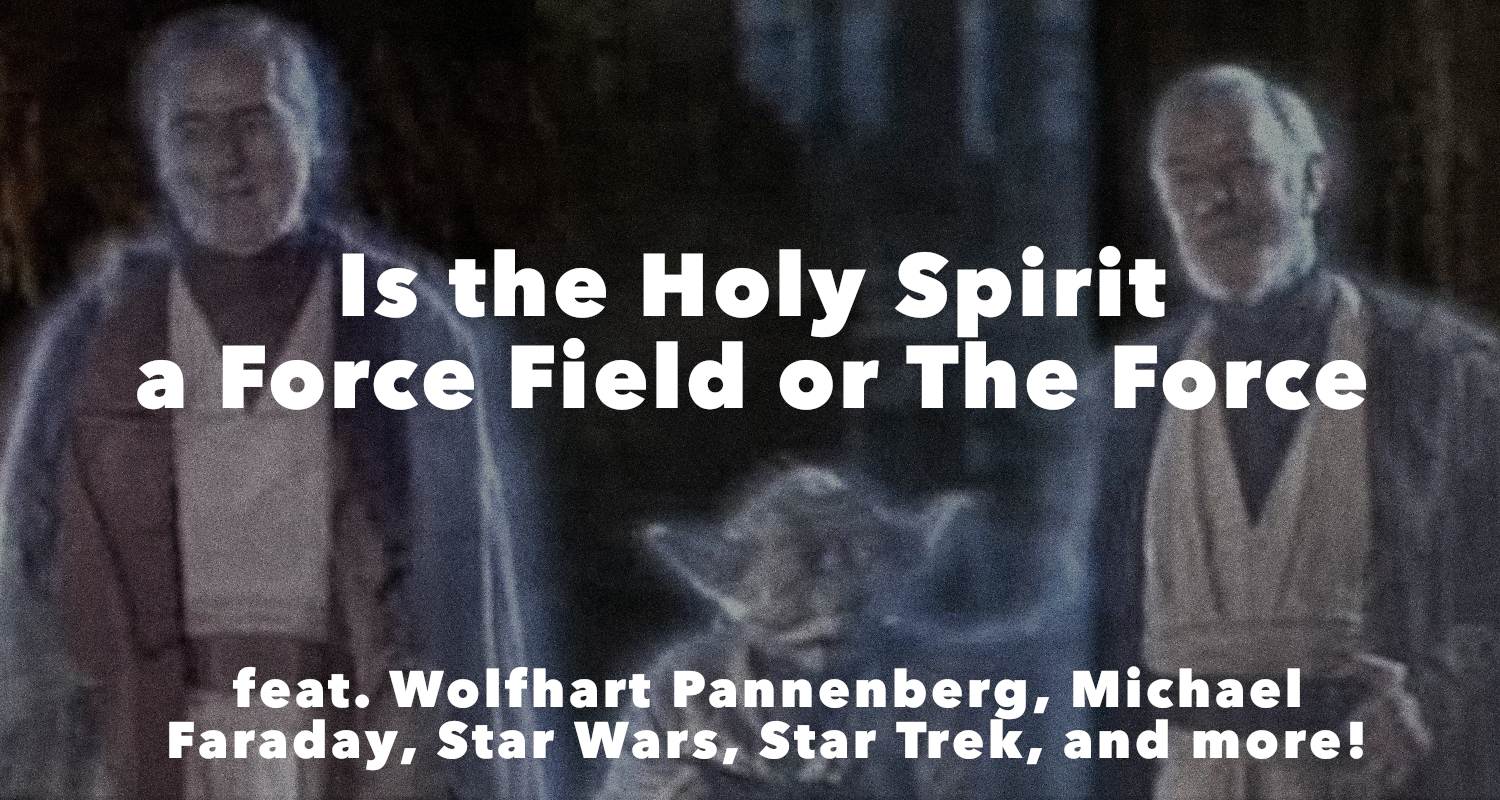 Force fields are science fiction tropes but they are also a scientific fact—after all, science fiction is inspired by recent scientific discoveries. For most people, force fields conjure memories of Star Trek defense shields and tractor beams, or the ubiquitous Force in Star Wars, but thanks to the scientific research of Michael Faraday, James Maxwell, Einstien, and many others, gravitational and electromagnetic force fields have been discovered and have been used to unveil cosmological mysteries.
Force fields are science fiction tropes but they are also a scientific fact—after all, science fiction is inspired by recent scientific discoveries. For most people, force fields conjure memories of Star Trek defense shields and tractor beams, or the ubiquitous Force in Star Wars, but thanks to the scientific research of Michael Faraday, James Maxwell, Einstien, and many others, gravitational and electromagnetic force fields have been discovered and have been used to unveil cosmological mysteries.
In an essay in his book Toward a Theology of Nature (1993), Wolfhart Pannenberg argued that force fields linked natural and supernatural phenomena, and provided a rubric to understanding how God governs the material world with immaterial forces. Wolfhart Pannenberg argues that the Holy Spirit may be identified as the aggregate force in the universal of all individual forces, and this allowed the immaterial Holy Spirit to govern the cosmos.
At this point, I admit that Pannenberg sounds remarkably like Obi-Wan Kenobi explaining the Force to Luke Skywaker:
“The Force is what gives a Jedi his power. It’s an energy field created by all living things. It surrounds us and penetrates us. It binds the galaxy together.” — Obi-Wan Kenobi, Star Wars IV: A New Hope.
Also, I admit that Pannenberg's famous student Stanley J. Grenz also frequently employed science fiction references in his writings as well. Nevertheless, Pannenberg's controversial indirect and/or direct identity of the Holy Spirit with force fields in nature has a scientific grounding, especially in the work of Michael Faraday (a remarkable scientist that is often disparaged for his Christian faith).
Wolfhart Pannenberg, Michael Faraday, and Field Theories
To unpack Pannenberg's argument, I've provided a quotation from his essay "The Doctrine of Creation and Modern Science" from his book Toward a Theology of Nature, specifically in the subsection of "Field and Spirit". In this quotation, Pannenberg grounds his identification with field theory and the Holy Spirit in the work of the renowned scientific discoveries of Michael Faraday, demonstrating that Pannenberg is not dependent upon science (not science fiction alone).
After this has been said, the implicit theological relevance of the field theories of Michael Faraday and his sucessors becomes evident. The main point of the field concept was to turn around the relation between force and body. To Faraday, the body was but a manifestation of the force and body. To Faraday, the body was but a manifestation of the force that he conceived as an independent reality prior to the body, and he did so in conceiving forces in terms of fields. His vision was to reduce all the different forces to a single field of force that determines all the changes in the natural universe. In 1974, William Berkson showed that this metaphysical vision formed the basis of Faraday's field physics and the point of departure for the different experiments he devised and for the relatively limited demonstrations of the reality of fields that he acheived by those experiments. The decisive point in Faraday's grand vision was to conceive of body and mass as secondary phenomena, a concentration of force at particular places and points of the field. The material particle appears as the point where the lines of force converge and form a "cluster" that persists for some time.
The turn toward the field concept in the development of modern physics has theological significance. This is suggested not only by its opposition toward the tendency to reducing the concept of force to bodies or massess but also because field theories from Faraday to Einstein claim a priority for the whole over the parts. This is of theological significance, because God has to be conceived as the unifying ground of the whole universe if he is to be conceived as creator and redeemer of the world. The field concept could be used in theology to make the effective presence of God in every single phenomenon intelligible. [1]
Force fields and Stoic Pneuma
Pneuma is the Greek word for spirit, as in the hagia pneuma (Holy Spirit). Wolfhart Pannenberg continues to appropriate the Stoic and Plantonic concepts of pneuma in order to explain Christian pneumatology. It would be a mistake to conclude that Pannenberg is positing natural revelation, and if this is not obvious to the reader, I recommend reading Pannenberg's correspondence with Karl Barth.
According to [Max] Jammer, the direct predecessor of the field concept in modern physics was the Stoic doctrine of the divine pneuma, which was conceived as a most subtle matter that penetrates everything and holds the cosmos together by the powerful tension between its differing parts, that accounts for their cohesiveness as well as for the different movements and qualities of things. The Stoic doctrine of pneuma had an important impact on the patristic theology of the divine spirit and especially on its descriptions of the cosmological function of the spirit in creation. From the point of view of the early Christian fathers there was only one major difficulty connected with the Stoic conception of the pneuma: The Stoics conceived of it as a subtle material element. This was unacceptable to the Christian theologians, because they could not imagine God to be a material body. They opted, rather, for the Plantonic conception of the divine reality as purely spiritual.
Difficulties of this sort no longer burden the field concept of modern physics, at least if no ether is considered necessary for the expansion of waves within the field. Thus the major theological difficulty with the Stoic field concept has been removed by its modern development; and since the field concept as such corresponds to the old concept of pneuma and was derived from it in the history of thought, theologians should consider it obvious to relate also the field concept of modern physics to the Christian doctrine of the dynamic presence of the divine spirit in all of creation. Such a way of using the field concept would certainly correspond to the connection that Christian patristics established between the biblical affirmations about the divine spirit as the origin of all life and the Stoic doctrine of the pneuma. [2]
Is the Holy Spirit the Cosmic Force Field?
In conclusion, Wolfhart Pannenberg shows proper humility and admits that his theory is precisely a theory, and awaits further verification. I was inspired and intrigued by his proposition and tempered conclusion, as it may provide a fruitful way for understanding a theology of nature without the idolatry of natural revelation. Here is his concluding quote:
To be sure, even a cosmic field conceived along the lines of Faraday's thought as a field of force would not be identified immediately with the dynamic activity of the divine spirit in creation. In every case the different models of science remained approximations in that they are all conceived under the point of view of natural law, of uniform structures in natural process. Therefore theological assertions of field structure of the divine spirit's activity in the cosmos will remain different from field theories in physics. [3]
May the fourth be with you!
Sources:
1. Wolfhart Pannenberg, Toward a Theology of Nature. Westminster John Knox Press; 1st edition (January 1, 1993). pp. 38-39
2. Ibid. pp. 39-40.
3. Ibid. pp. 40-41.
Related: Albert Einstein, Force Fields, Michael Faraday, Star Trek, Star Wars, The Force, Toward A Theology of Nature, Wolfhart Pannenberg



Leave a comment